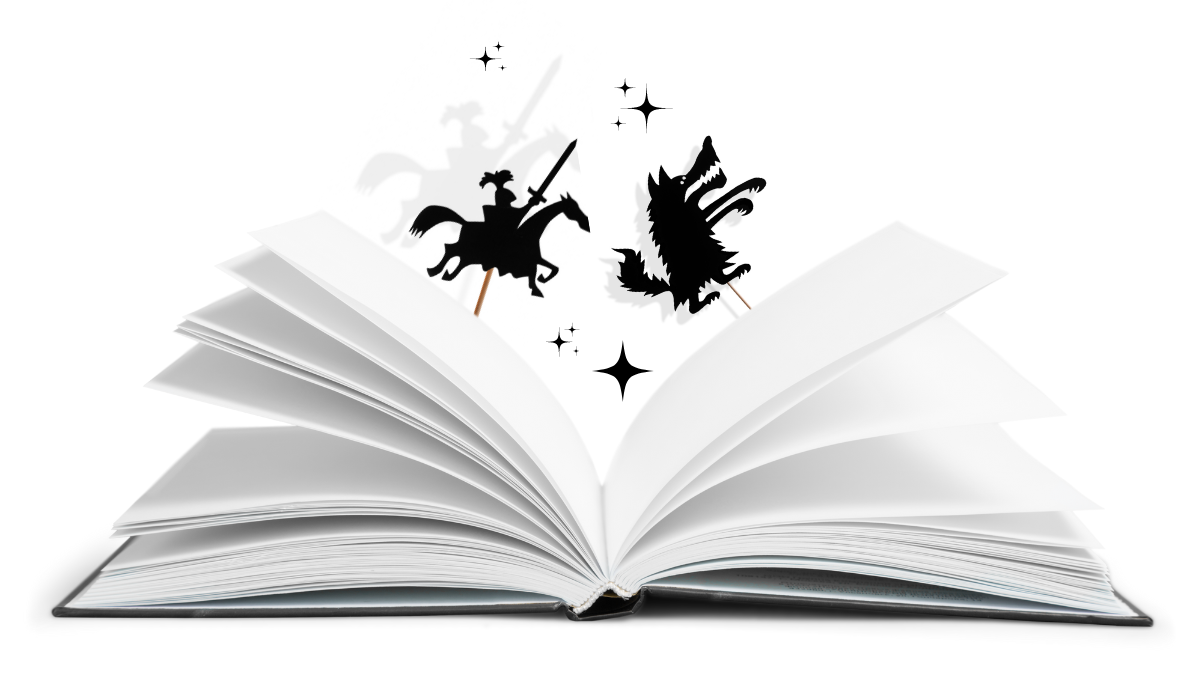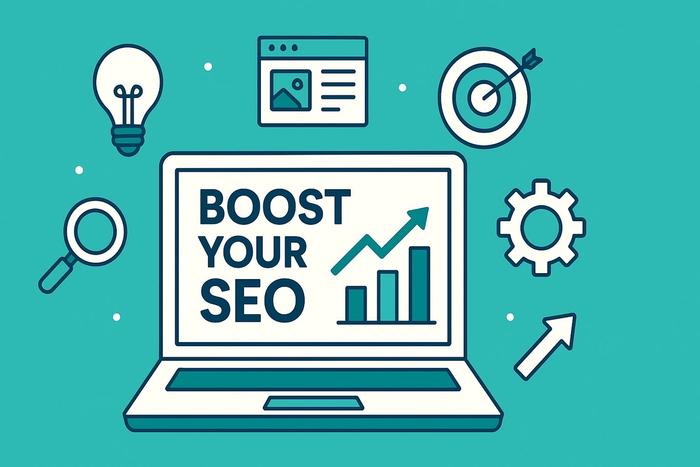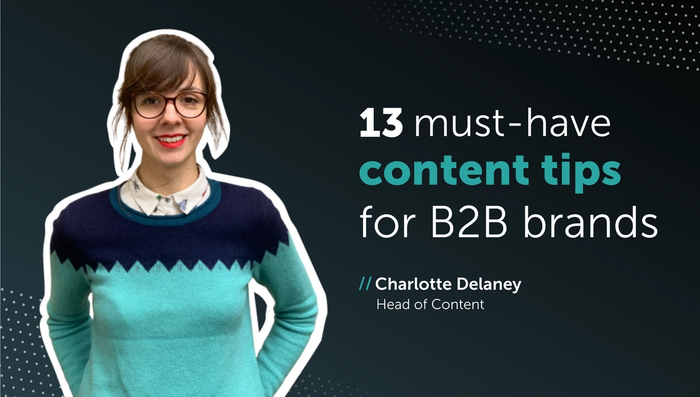Content Marketing & SEO
The Nutcracker guide to B2B storytelling

This story is not about you…
Every story starts with a hero on a quest.
They set off on a journey. They pull the sword from the stone. They defeat the foe. They find their happily ever after.
When you market your business, you are telling a variation of that story.Every blog you write, every advert you create, every post you share, is part of that narrative. But in this story, your brand is not the hero. Your customer is.
So what part do you play in their journey?
Here, we break down B2B storytelling: why you need it, how it works and how to craft a compelling narrative that converts your marketing efforts into leads.
The psychology of storytelling
First things first. Why do we need storytelling in B2B?
It’s the best way to convey information – and make sure it sticks.
What’s more effective, telling a child not to lie or the gruesome story of The Boy Who Cried Wolf? Stories are scientifically more memorable than facts and figures, with one academic study finding that narrative text is twice as fast to read and twice as easy to remember compared to expository text. For B2B, it’s an excellent way not only to convey USPs and information, but to make sure they are remembered.
It influences decision-making by evoking an emotional response.
All decisions are, in some way, based on emotions: even when we think we are being guided purely by logic and rationality (such as at work). Recent studies have used FMRI scanning to understand the role of emotion in decision making and found that emotions are always – whether consciously or sub-consciously – at play, both when we are considering our options and acting on them*.
It raises long-term awareness and forges long term connections.
B2B marketing is rarely about instant gratification. A CIO, for instance, isn’t going to buy a new data platform on a whim because they saw an advert on Google. B2B is about creating long-term awareness, building trust, and being in the right place at the right time. Storytelling makes your brand part of that customer journey, hitting your target audience with relevant messages at every step.
It makes you stand out in a very crowded market
Just because it’s B2B, doesn’t mean it needs to be boring. People are exposed to 5K+ brand messages every day, but are only aware of about 86, while only 12 make a lasting impression*.If you want to get your audience’s attention, you need to do things differently. Create something eye-catching. Be memorable. Stop churning out the same old content as everyone else and see the impact it has on your engagement.
How to tell a story…
Consumer advertising has always been about stories. Empathetic and personal, they elicit an emotional response, pulling us towards a desired action. By telling those stories successfully, the brand becomes a manifestation, not of what we should buy, but what we need to make our lives – or ourselves – better.
Yet for some reason, when it comes to B2B marketing, all of that disappears. Dry facts and industry jargon are packaged up and delivered to the audience wrapped in generic corporate paper. It’s safe, it’s sterile, it’s functional and it forgets a crucial point.
B2B marketing is still targeting people.
Just because your target audience is ‘at work’ that doesn’t mean they have become a robot, devoid of personality, emotion, preference, pain. If you want to connect with a B2B audience, you need to be able to tell their story, to hold up that mirror, to show them how your brand is the answer to their problems.
So who is your customer? What is their story? Where do you come in?
Let’s break it down chapter by chapter…

The hero
All the best stories have a relatable protagonist. Your customers need to see themselves in your marketing to be able to relate your brand to their needs. That means identifying the right decision-makers and finding out as much about them as possible.
Who are they? Where are they? What resonates with them?
Thanks to digital, we’ve surpassed traditional demographics of age and gender, and can glean insight into the people we are targeting that goes beyond job title and geography. What are they reading, what social media platforms are they on, what interests them, what influences them, what irks then? The more you can discover about the people behind the profession, the more you can weave narratives that compel them to take action.
Don’t assume you know all there is to know about your target market. Times change. Industries evolve. Keep doing your research to make sure that your ‘relatable protagonist’ isn’t becoming a tired cliché. Successful storytelling evolves with its audience, like a feminist retelling of Cinderella or a vegan-friendly three little pigs.
The journey
You’ve got your hero. Now where are they going? Understanding the journey that your customer is on helps you to connect with them at the right milestones on their path to purchase.
There’s no point spamming a potential customer with endless variations of ‘3 Reasons You Need This Software’ if they have already passed that point on their journey, just like the magic beans are no use to Jack once he’s in the giant’s lair. Successful storytelling positions you on the roadmap, delivering content, posts and pitches that target customers at the right moment.
It’s not enough to simply pop up at the occasional fork in the road, either. You need to be there for the duration, building brand awareness at every junction. And unlike traditional methods of marketing, digital allows you to constantly adapt and respond to your customer’s location on that map: by using social listening and SEO, you can make sure you are always delivering the right message, at the right time.
The Big Bad
Who’s afraid of the big bad wolf?The huntsman isn’t. So why try to sell him wolf repellent? You need to know your customers’ pain points inside out to be able to position your brand as the solution they need.
Before you can tell your target audience what they should buy, you need to understand why they need it. Do your research: find out what’s hurting them, why it’s a problem and what are the consequences of not fixing the problem.
Maybe their bad data management is taking them one step closer to a GDPR fine. Maybe their out-of-date software is costing them customers due to clunky processes. Maybe they keep throwing marketing spend down the drain without any leads to show for it (hint hint).
Identify what the Big Bad is in your customers’ story and you can position your brand as the perfect tool to defeat it. Which brings us neatly to...
The magic
What does your hero need to finish their epic quest? You.
You may not be the hero, but your brand is an important part in the story. You’re the pebble that beats Goliath. You’re the sword in the stone. You’re the glass slippers, the one ring, the magic flute.
By engaging in storytelling, you’re showing your customers that you are the perfect solution to their problem, rather than listing a long line of abstract USPs. What you are selling is the outcome, not the tool.
Think about what’s more compelling:
For sale: one cotton/linen blend bag of ¾ inch green beans with magical properties.
Or
For sale: a sack of silver, a golden chicken that lays golden eggs, a harp that plays itself: just plant one bean for overnight results.
Use storytelling to make your brand part of your customers’ narrative
It’s the most effective way to engage your audience and make them recognise the benefits of your solution.
At Nutcracker, we work with B2B brands to craft compelling stories that connect with our clients’ target audiences – with tangible commercial results.
We specialise in creating unforgettable B2B brand identities, using content, social media, design and marketing, driving customer awareness, brand recognition and sales.

Author Bio
Charlotte Delaney is a seasoned marketing professional and the Head of Content at Nutcracker, a B2B marketing agency specialising in supporting fast-growth companies. With a passion for demystifying complex marketing concepts, Charlotte draws on her extensive experience working with clients in the technology and financial sectors.
She has a proven track record of developing data-driven content strategies that drive tangible business results. Her expertise lies in connecting brand narratives to current cultural moments, a skill she applies to help businesses create campaigns that are both relevant and impactful. You can connect with her on LinkedIn.
Share this:





